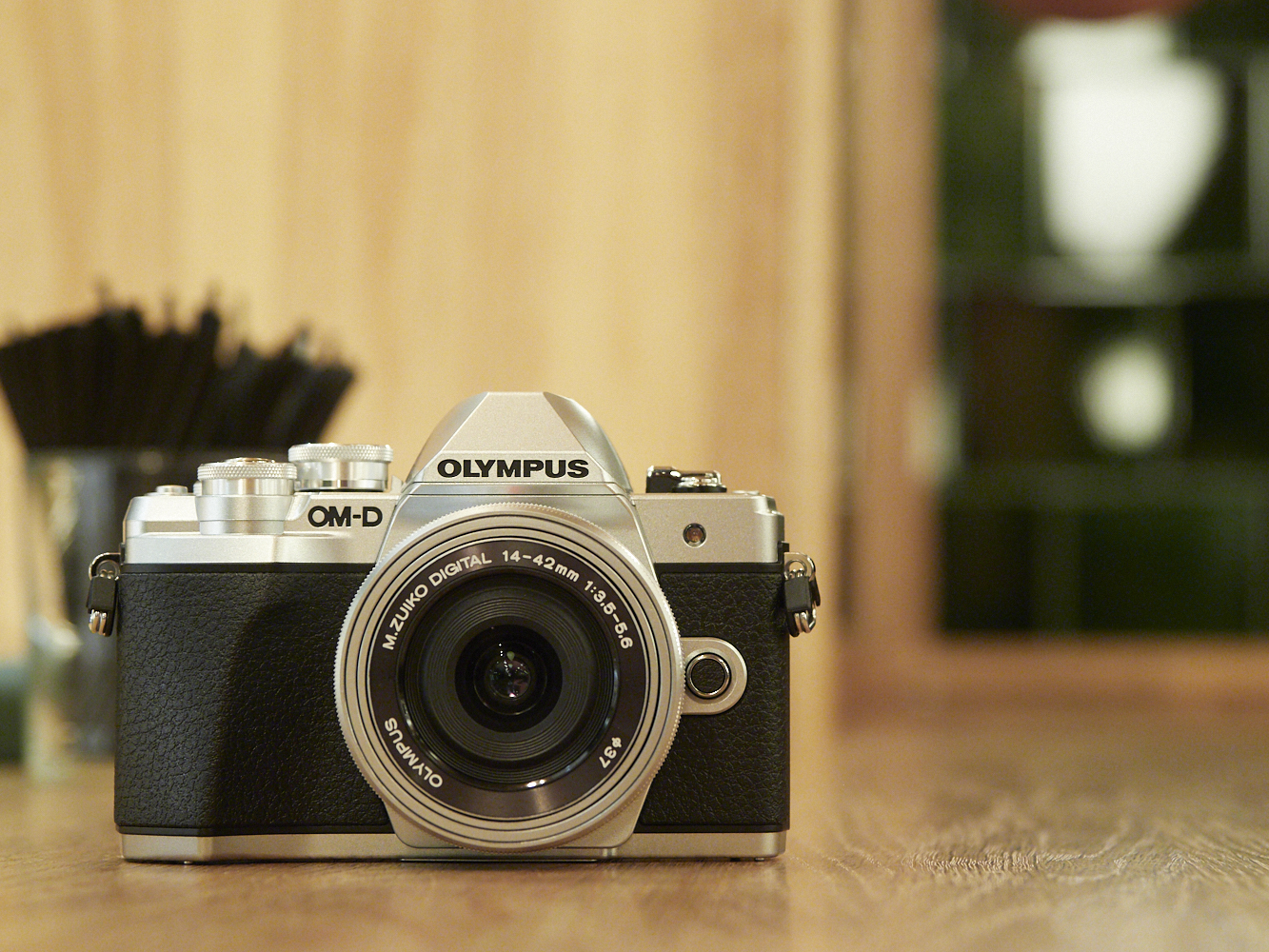To understand the Olympus OMD E-M10 Mk III, you should first sort of understand how mirrorless cameras and their role in consumer based photography has evolved. You see, for years mirrorless cameras were really just valued amongst those that wanted DSLR quality in a smaller package. And then they evolved to become more serious–but at the same time they’ve sort of been made simpler to go after that very large consumer based market. With the Olympus OMD E-M10 Mk III, you pretty much have the equivalent of what you’d liken to a Canon Rebel; something that is really meant to be very consumer oriented and still allows a photographer room to grow without NEEDING to upgrade. Indeed, the Olympus OMD E-M10 Mk III is bound to deliver image quality comparable to many other options out there. It shares the same sensor as many of the company’s other cameras; but the big thing is the interface and the looks.
Tech Specs
| Olympus OM-D E-M10 Mark III SPECIFICATIONS | |
| Sensor / Dust Reduction | |
| Sensor Type | 4/3″ Live MOS Sensor |
| Effective Pixels | 16.1 million |
| Total Pixels | 17.2 million |
| Aspect Ratio & Area | 4:3 / 17.4 x 13.0mm |
| Dust Reduction | Super Sonic Wave Filter |
| Processor | |
| Processor Type | TruePicTM VIII |
| Focusing System | |
| AF System Type | High-speed imager AF |
| Focus Modes | Single AF (S-AF) / Continuous AF (C-AF)*1 / Manual Focus (MF) / S-AF + MF / AF tracking (C-AF + TR)*1 *1 While Four-Thirds lens is attached, only S-AF (single target) or MF for video are available. |
| Magnified Frame | 3x , 5x , 7x , 10x , 14x *Autofocusing is possible in the magnified frame; can be assigned to button to turn magnify frame AF on and to activate magnification; touch icon on monitor to turn off; enables selection of AF point from over 800. |
| Super Spot AF | Available*(Contrast AF in center of the monitor when magnified) *Available only when a Micro Four Thirds lens is attached. |
| Face priority AF / Eye priority AF | Available Eye priority AF mode : off / nearer-eye priority |
| Focusing Points / Focusing Points Selection Mode | 121-point contrast AF All target, group target (9-area), single target |
| AF Illuminator | Available |
| AF Targeting Pad | Available (activate / deactivate with double tap on rear monitor) |
| Manual Focus Assist | Focus ring rotation activates Live View image magnification and/or focus peaking when in S-AF+MF or MF mode |
| Peaking Function | Activate with Fn button or focus ring Change peaking settings using the Info button Color selection: white, black, red, yellow |
| Image Stabilization | |
| System Type | Built-in 5-axis sensor-shift image stabilization for video and still photos (compensates for yaw, pitch, roll, vertical shift, horizontal shift) |
| Modes | S-IS ON(AUTO), OFF |
| Live View Image Stabilization | Activation by half-pressing shutter button or enlarging view |
| Focal Length Setting | 1 setting |
| Stabilization Performance | 4.0 EV steps* *Based on CIPA measurement conditions. When using M.Zuiko Digital ED 14-42mm F3.5-6.3 EZ (focal length =42mm (35mm equivalent with 84mm)) |
| Available manual focal length setting | Input focal length: 0.1 to 1000 mm (0.1 step) |
| Lens IS Priority | Cannot be activated from camera. Lens IS has priority over camera body IS when the IS switch on the lens is turned to ON. When lens IS has priority over camera body IS, camera body IS functions as follows: – when Olympus lens is attached: compensates for camera roll – when third party lens is attached: does not function |
| Shutter / Sequential Shooting | |
| Shutter Type | Computerized focal-plane, high-speed mechanical shutter Silent electronic shutter |
| Shutter Speed | Mechanical Shutter: 1/4000 – 60 sec. (1/3 EV steps selectable) Live Bulb/Live Time: Max. 30 min. (selectable in menu settings, with 8-min. default setting) Live composite: Max. 3 hours Electronic first curtain shutter (Anti-shock mode) : 1/320 – 60 sec Electronic shutter (Silent mode): 1/16000 – 30 sec |
| Silent Mode | Available as “Silent” in Scene mode and Advanced photo mode. (sound, AF illuminator and flash are set to OFF as default settings.) |
| Sequential Shooting Maximum Speed | [Sequential shooting H mode] approx 8.6 fps (IS ON/OFF) *Focus and exposure are fixed at the values for the first shot. [Sequential shooting L mode] approx 4.8 fps (IS ON/OFF)*When using the M.ZUIKO DIGITAL ED 14‐42mm f/3.5-5.6 EZ *SS=1/250 |
| Max. Recordable Pictures in Sequential Shooting | [RAW] Max. ∞ frames (in seq. shooting L) Max. 22 frames (in seq. shooting H) [JPEG; LN] Max. ∞ frames (in seq. shooting L) Max. 36 frames (in seq. shooting H) * When using the M.Zuiko Digital ED 12-40mm f/2.8 Pro * With TOSHIBA SDHC UHS-II R260・W240 EXCERIA™ PRO |
| Self Timer | Operation time: 12 sec., 2 sec., custom (Wait time: 1-30sec., Shot interval: 0.5/1/2/3sec., Number of shots: 1-10) |
| Viewfinder / Monitor | |
| Finder Type | Eye-level electronic viewfinder, approx. 2.36M dots |
| Field of View / Viewfinder Magnification | Approx. 100% / Approx.1.23x (50mm lens, Infinity, -1m-1) |
| Eye Point / Diopter Adjustment Range | Approx. 19.2mm (-1m-1, Distance from rear lens surface) / -4 ~ +2m-1 |
| Preview | Live View preview (without depth of field preview lock) |
| Live View Boost | Available *Exposure compensation will not be applied |
| Display Grid | Off / normal grid / trichotomy /golden grid / scale / diagonal / movie grid |
| Level Gauge | 2-axis (horizontal / vertical) level gauge |
| Finder Style | 1 style |
| Brightness / Color Temp Control | Adaptive brightness technology, ±2 level manual control /±3 level manual control |
| Eyecup | EP-16 eyecup is separately available |
| Rear Monitor Size | 3.0-inch tilting monitor* *Approx.1040k dots (3:2), electrostatic capacitance touch panel |
| Touch Control | Shutter release, AF area selection, AF area size adjustment, AF touch pad, frame forward/backward, magnified playback, Live Guide, Super Control Panel, Art Filter, Scene, Wi-Fi connection, video controls, video effects, video teleconvertertimer) |
| Tilting Capability | Upward tilting angle : up to 85 degrees Downward tilting angle : up to 45 degrees |
| Brightness / Color Temp Control (Rear Monitor) | ±7 levels / ±7 levels |
| Color Tone Select | Vivid / Natural |
| Live View | Approx. 100% field of view, exposure compensation preview, WB adjustment preview, gradation preview, face detection preview (up to 8 faces), grid line, magnification display (x3/x5/x7/x10/x14), |
| Display Mode | Display modes: Standard, Histogram, Highlight & Shadow, Level Gauge, Off (Image Only) |
| Exposure Control / Flash | |
| Metering System | Digital ESP metering (324-area multi pattern metering), center-weighted average metering, spot metering, spot metering with highlight control, spot metering with shadow control |
| Metering Range | EV -2 – 20 (using f2.8 lens, ISO 100) |
| Exposure Mode / Shooting Mode | Auto (Live Guide can be used) , P: Program AE (program shift can be performed), A: Aperture Priority AE, S: Shutter Priority AE, M: Manual (Live Bulb, Live Time and Live Composite are available), Scene Select AE, Advanced Photo AE, Art Filter |
| Scene Select AE | [Advanced Photo] Live Composite, Live Bulb, Multiple Exposure, HDR Backlight*1, Silent, Panorama, Keystone Compensation, AE Bracketing, Focus Bracketing [Scene] (Portrait, e-Portrait, Landscape + Portrait, Night + Portrait, Children, Night scene, Sport, Hand-held Starlight*2, Fireworks, Light trails, Sports, Panning, Landscape, Sunset, Beach & Snow, Backlight HDR*1, Candlelight, Silent, Macro, Nature Macro, Documents, Multi Focus Shot) *1 4 images automatically shot and combined into a single image composite *1 8 images automatically shot and combined into a single image composite |
| ISO Sensitivity | AUTO ISO (default) : LOW (approx.100) ‐ 6400 with customizable upper limit (200 – 25600) Manual ISO : LOW (approx.100), 200 – 25600 (adjustable in 1/3 steps) |
| Exposure Compensation | ±5 EV, adjustable by 1/3 EV steps When shooting in HDR or in video, only adjustable up to ±3 EV steps Live View only reflects up to ±3 EV steps |
| AE Lock | Locks with a half-press of the shutter button , AEL/AFL button(can be set to Fn button as well) |
| Flash Intensity Control Mode | TTL Auto, Auto*, Manual, Super FP*(FP-TTL AUTO, FP-MANUAL) * Available on the external flash |
| Built-in Flash | TTL Flash, GN=5.8 (ISO100・m) / GN= 8.2 (ISO200・m) |
| Flash Mode | Flash Auto*, Redeye, Slow Sync.(1st curtain), Slow Sync.(2nd curtain), Red-eye Slow Sync.(1st curtain), Fill-in, Manual(1/1(FULL)~1/64), Flash Off. *AUTO and SCN only |
| Synchronization Speed | 1/250 sec.* *Super FP:1/125-1/4000sec *FL-50R: 1/180 sec. Others: 1/200 sec. |
| Flash Intensity Control | Up to ±3 EV in 0.3EV steps |
| Compatible External Flash | FL-50R, FL-36R, FL-20, FL-14, FL-300R, FL-600R, FL-900R, STF-8, FL-LM3 |
| Memory / Image Recording (File Format) | |
| Compatible Memory | SD (SDHC, SDXC, UHS-I, UHS-II, Eye-Fi Card*1 compatible) *1 Not compatible with Endless Memory. |
| Recording Format | DCF2.0, Exif2.3 |
| File Format | RAW (12-bit lossless compression), JPEG, RAW + JPEG |
| Recording Image Size | [RAW] 4608 x 3456 pixels [JPEG] 4608 x 3456 pixels – 1280 x 960 pixels |
| White Balance / Color Mode | |
| White Balance Mode | Auto WB, 6 Preset WBs, 4 Capture WBs, Custom WB(Kelvin setting) |
| White Balance Compensation* | ±7 steps in each A-B/G-M axis * Except for Custom WB |
| Color Mode | sRGB, Adobe RGB |
| Bracketing / HDR | |
| Exposure Bracketing | Available as AE Bracketing in Advanced Photo mode. 3 frames in 1.0 EV steps, 5 frames in 0.7 EV steps. |
| Focus Bracketing | Available as Multi Focus Shot in Scene mode and Focus Bracketing in Advanced Photo mode. Shoots 8 frames. When in Advanced Photo mode, focus steps can be adjusted in 2 levels. Compatible with Micro Four Thirds lenses only. |
| HDR (Auto Composite) | Available as Backlight HDR in Scene mode and HDR in Advanced Photo mode. ISO sensitivity is fixed at 200, and maximum shutter speed setting is 4 seconds. HDR1 is available in both modes. HDR2 (painting-like) is available in Advanced Photo mode only. Exposure compensation can be performed in Advanced Photo mode only. |
| Creative Features | |
| Picture Mode | i-Enhance, Vivid, Natural, Muted, Portrait, Monotone, Custom, e-Portrait, color creater, Art Filters |
| Gradation | Auto, Normal, High Key, Low Key [except i-Enhance, Art Filters, color creater] |
| Highlight & Shadow Control | ±7 steps each for highlight, shadow, midtone |
| Picture Tone | Neutral, Sepia, Blue, Purple, Green for Monotone |
| Art Filter (Variation / Art Effect) |
Pop Art (I, II / a.b.c.d.e) Soft Focus ( – / c.e) Pale & Light Color (I, II / a.b.c.d) Light Tone ( – / d) Grainy Film (I, II / b.c.d.f.g) Pin Hole (I, II, III / d.) Diorama ( – / d.) Cross Process (I, II / b.c.d.) Gentle Sepia ( – / a.b.c.d.f.) Dramatic Tone (I / b.c.d.e.f.) (II / b.c.d.e.f.g.h) Key Line (I, II / a.b.c.d.e.) Watercolor (I, II / a.b.c.d.) Vintage (I, II, III / a.b.c.d.e.f.i) Partial Color (I, II, III / a.b.c.d.e.f) Bleech Bypass (l, II,/a, b, c, d, e, f, i) |
| Art Effect | a. Soft Focus Effect b. Pin-Hole Effect c. White Edge Effect d. Frame Effect e. Star Light Effect f. Blur Effect (Top & bottom, Left & Right) g. B&W Effect (None, Yellow, Orange, Red, Green) h. Picture Tone (None, Sepia, Blue, Purple, Green) i. Shade Effect (Top & bottom, Left & Right) |
| Color Creator | Color pattern : 30 colors / Saturation setting -4 ~ +3 |
| Multiple Exposure | 2 frames / Auto gain, |
| Live Bulb / Live Time | 0.5 sec – 60 sec |
| Live Composite | 0.5 sec – 60 sec / Lighten Mode (Bright area prioritization) |
| Interval Shooting | Interval Time 1sec. – 24 Hours, Max 999 frames. Available on making Time-lapse movie automatically |
| Keystone Compensation | With (can be confirmed in Live View) *Horizontal and vertical compensation can be performed simultaneously by +-20 steps. |
| Video / Audio Recording | |
| Video Recording Format | MOV(MPEG-4AVC/H.264) |
| Movie Mode / Frame Rate / Compression Method | 3840 × 2160 (4K) / 30p, 25p, 24p / IPB (approx. 102 Mbps) 1920 x 1080 (FHD) / 30p, 25p, 24p / IPB (SF, F, N) 1920 x 1080 (FHD) / 60p, 50p / IPB (SF, F, N) 1280 x 720 (HD) / 30p, 25p, 24p / IPB (SF, F, N)60p: 59.94 fps, 50p: 50.00 fps, 30p: 29.97 fps, 25p: 25.00 fps, 24p: 23.98 fps, C4K 24.00 fps FHD IPB (SF: SuperFine / approx. 52 Mbps, F: Fine / approx.. 30 Mbps, N: Normal / approx. 18 Mbps) HD IPB(SF:SuperFine / approx.26Mbps, F:Fine / approx.14Mbps、N:Normal / approx.10Mbps) *Frame rates may drop when particular Art Filters and Movie Effects are used. *Class 10 or higher SD card is recommended for shooting movies. *UHS-II or UHS-I U3 card is recommended for 4K shooting. |
| Maximum Video Recording Time | [MOV] Approx.. 29min |
| Movie Tele-converter | Approx. 4x (enlarges view of selected area) |
| Art Filter Movie | Available (Frame rates may drop when certain Art Filters are used) |
| Movie Effect | One-shot Echo / Multi-echo / Art Fade / Old Film |
| Timelapse Movie | [MOV] 3840×2160(4K)/ 5fps 1920×1080(FHD)/ 5fps,10fps,15fps 1280×720(HD)/ 5fps、10fps、15fps、30fps |
| IS for Movie | M-IS1*(Image sensor shift and electronic image stabilizer with multi motion IS), M-IS2(Image sensor shift with multi motion IS), Off *While using M-IS1, field of view may be affected. |
| AE Lock | Available |
| Video Exposure Control | Program AE, aperture priority AE, shutter priority AE, manual |
| Grid Lines / Focus Peaking | 4 types of grid lines / 4 colors for focus peaking |
| Clips | 1, 2, 4, 8 sec. (Further continued shooting possible up to 16 seconds by pressing video record button again) |
| High Speed Movie | 120 fps (1280X720, MOV) |
| Live View Output via HDMI | Monitor Mode (outputs video and info display to a connected monitor) *1 *1 Camera display is turned off when connected by HDMI. |
| Audio Recording Format | Wave Format (Stereo linear PCM/16-bit, Sampling frequency 48kHz) |
| Microphone / Speaker | Built-in stereo microphone / built-in mono speaker *External stereo microphone can be attached |
| Microphone Function | Wind noise reduction, recording volume Audio dubbing possible for still pictures (up to 30 sec.) *May affect audio quality. |
| Operability | |
| Wi-Fi | Easy Connection QR code setting Live View, rec view, wireless touch AF shutter, self timer (w/countdown guidance, sequential shooting, video recording capability), wireless release, video recording, power offAuto / SCN / ART / P / A / S / M (Live Bulb, Live Time, Live Composite) and drive mode can be selected.* Aperture, shutter speed, exposure, ISO sensitivity, white balance can be adjusted.* *When in private connection |
| Playback Mode | Single-frame, information display, index display (4/9/25/100 frames), Clips, calendar, enlargement (2x – 14x), video (with sound, FF/REW/Pause), picture rotation (auto), slideshow (with sound including BGM, Slide show effects, replaceable BGM), Light Box display |
| Dial Customization | Dial function is cutomizable for both dials |
| Button Customization | Can select from 11 functions to assign to buttons. |
| Copyright Settings / Lens Info Settings | With / Without |
| Image Editing Functions | RAW data edit, Gradation auto, Monochrome, Sepia, Red-eye fix, Saturation, Resize (1280×960, 640×480, 320×240), Trimming, Aspect, e-Portrait, Image Overlay, Post recording
RAW data edit based on settings of the camera (including e-Portrait, Color Creator, Art Filter, ART-BKT). |
| Video Editing Functions | Trimming (begining / end) / in-video image extraction (4K only) |
| Menu Languages (34 selectable) | 34 languages selectable : – English, French, German, Spanish, Italian, Japanese, Korean, Traditional Chinese, Simplified Chinese, Russian, Czech, Dutch, Danish, Polish, Portuguese, Swedish, Norwegian, Finnish, Croatian, Slovenian, Hungarian, Greek, Slovakian, Turkish, Latvian, Estonian, Lithuanian, Ukrainian, Serbian, Bulgarian, Rumanian, Indonesian, Malay, Thai |
| Connectivity / Power Requirements | |
| USB Connector | USB Micro-B |
| Remote Connector | Not Available |
| HDMI Connector | Micro HDMI (type D) |
| Flash Attachment | Hot shoe |
| Wireless LAN | Built-in(IEEE 802.11b/g/n) |
| PC Interface | USB 2.0 Hi-Speed |
| TV Interface | Not Available |
| Battery | BLS-50 Li-ion battery (included) |
| Battery Status Display | Remaining power (4 steps) |
| Sleep Mode | Available (1/3/5 min. off) |
| Number of Recordable Pictures | Approx.330 shots when using BLS-50, with Live View constantly on, using M.ZUIKO DIGITAL ED 14-42mm F3.5-5.6 EZ and TOSHIBA SD card, based on CIPA testing standards |
| Battery Life for Movie Recording | Approx. 80 minutes* (under standard JEITA testing) Approx. 140 minutes* (when zoom and other operational functions are not used) *When repeatedly recording at the maximum time of 29 minutes, using M.ZUIKO DIGITAL ED 14-42mm F3.5-5.6 EZ, 4K video shooting. |
| Weights & Dimensions / Operating Environment / Box Contents | |
| Weight | Approx. 410 g (with BLS-50 battery and Memory card, based on CIPA standards) Approx. 362 g (body only) |
| Dimensions | W:121.5mm H:83.6mm D:49.5mm (based on CIPA standards: excludes protrusions) |
| Operating Temperature Range | -10℃ ~ +40℃ (when in operation) / -20 ~ +60℃ (when stored) |
| Operating Humidity Range | 30 – 90% (when in operation) / 10 – 90% (when stored) |
| Box Contents | Body, USB cable, shoulder strap, instruction manual, warranty card, BLS-50 Li-ion battery , BCS-5 Li-ion battery charger |
Ergonomics
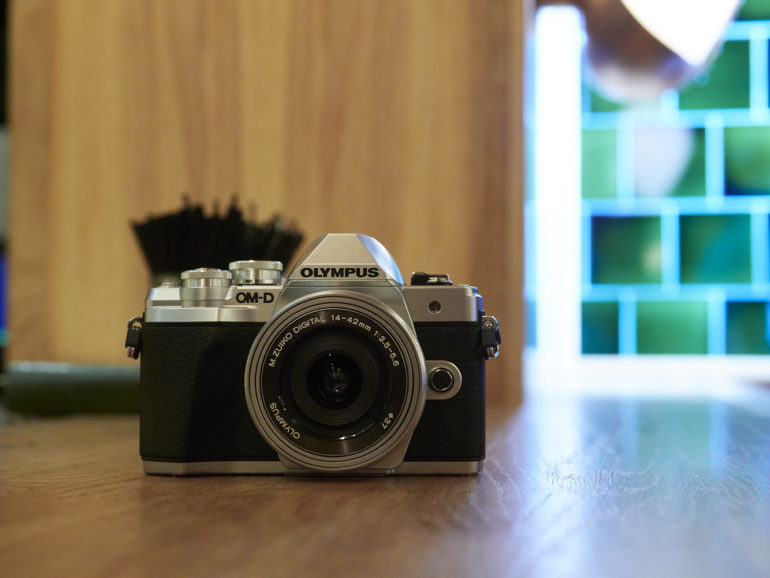
When you look at the Olympus OMD E-M10 Mk III, you’re bound to get someone saying “Oh, it’s that a vintage camera?” I mean, look at it–there’s a whole lot of beautiful and amazing retro aesthetics going on here. With that said, there’s also an emphasis on simplicity. When you look at the front of the camera, the only control is the lens release. Then there’s the Olympus branding and an infrared assist lamp. But otherwise, there isn’t a whole lot here.
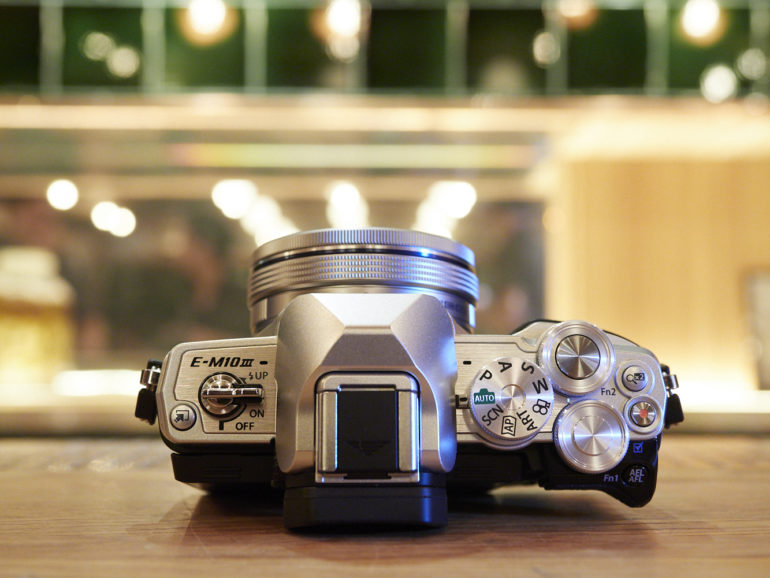
Look at the top of the Olympus OMD E-M10 Mk III and what you’ll spot here are buttons, dials and switches. Olympus chose to put the flash pop-up control on the on/off switch, which is a nice touch. But on the right side there are three dials. Two are for exposure and the other is for the modes. Then there’s the shutter button and various other controls. You’ll also spot the hot shoe on top here.
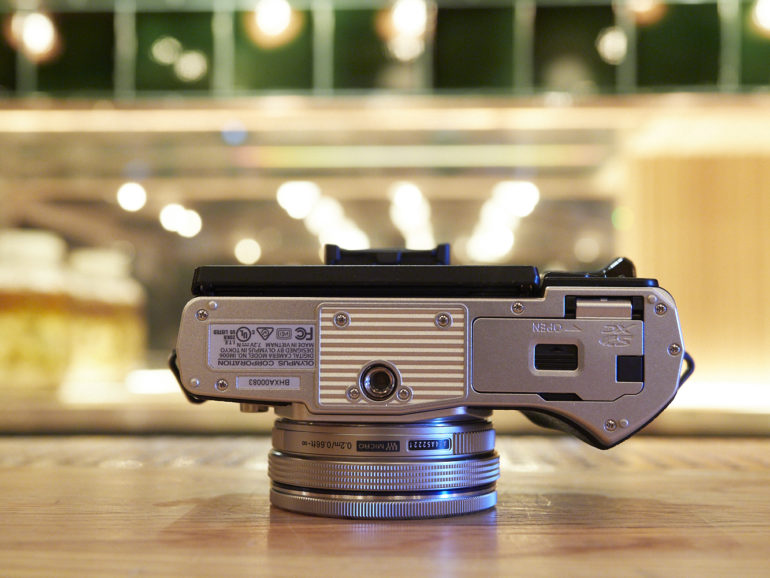
Turn to the bottom of the Olympus OMD E-M10 Mk III and what you’ll find here is the tripod socket and the battery compartment. Otherwise, there’s nothing else here that you should really pay attention to.
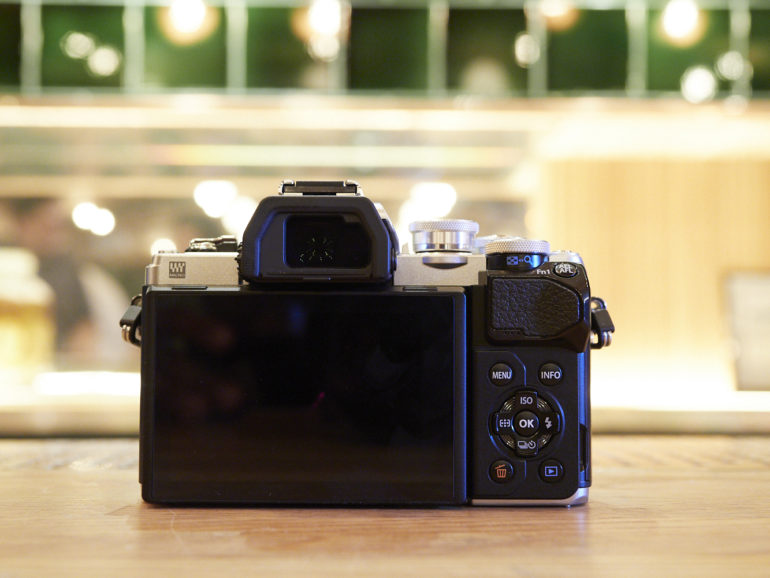
Turn to the back of the Olympus OMD E-M10 Mk III and you’ll spot the EVF, the LCD screen and the buttons. These buttons give direct access control in a lot of ways and also can be programmed to do other functions. For the consumer that Olympus is going after, this is more than enough.
Build Quality
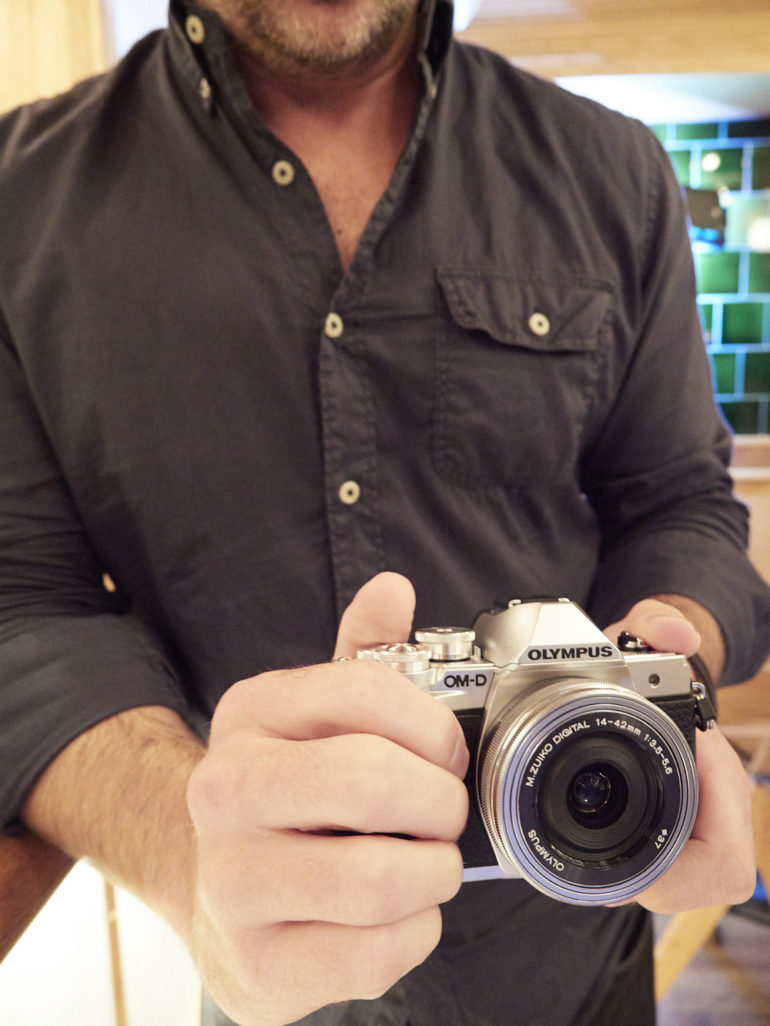
The Olympus OMD E-M10 Mk II got a bit of an update from its original version and incorporated much more of a patina factor into its design. For the most part, it was really all about embracing that retro look. With the Olympus OMD E-M10 Mk III we see that embraced yet again. It works for Olympus though–when you hold an Olympus camera they simply feel, well, like a camera. The retro aesthetics, the dials, the button placements, and the overall feel in your hand makes it seem like you’re holding an old school film SLR that was producing using plastic instead of metal.
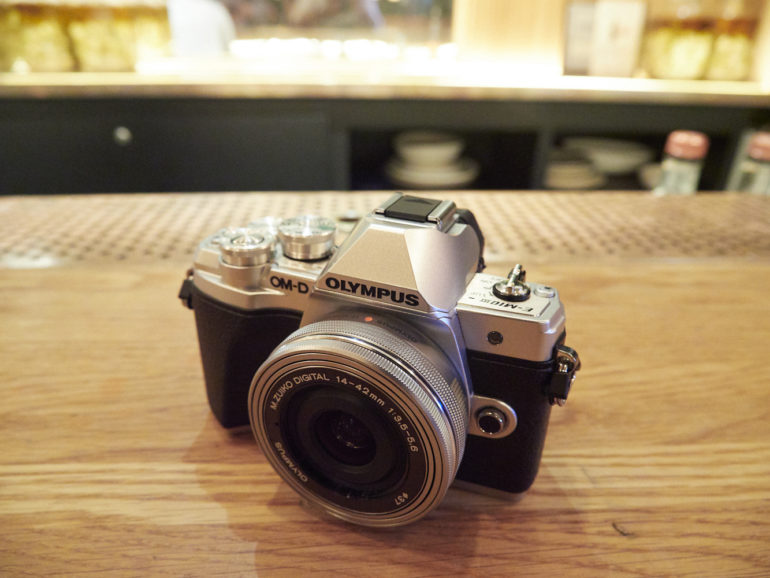
Olympus seems to be targeting the Olympus OMD E-M10 Mk III at the people who are stepping up from a camera phone. And part of this makes me wonder why Olympus hasn’t weather sealed the Olympus OMD E-M10 Mk III. I mean, your iPhone has it!
Ease of Use
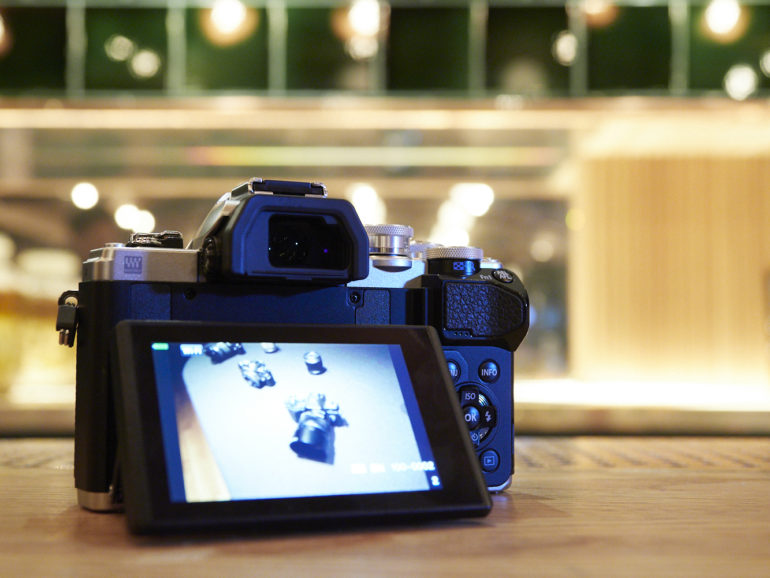
Olympus years ago introduced the Live Guide for photographers to use if they wished. With the Olympus OMD E-M10 Mk III they’re taking that steps further with an interface that is designed to be very simple for new customers yet if someone that owns an Olympus camera is looking to get another option, they can do so with this by accessing the older menus and options. For this audience though, I imagine that they’ll mostly use the scene modes and auto–so the rest won’t really matter. However, the Olympus OMD E-M10 Mk III can be used in full manual with full control over the image quality like many other cameras.
Autofocus
Olympus has always had the fastest autofocus system for years now due to how the Four Thirds sensor works. Even in low lighting, the Olympus OMD E-M10 Mk III didn’t have any sort of issues. With that said though, I should emphasize that we tested a prototype of the camera.
Image Quality
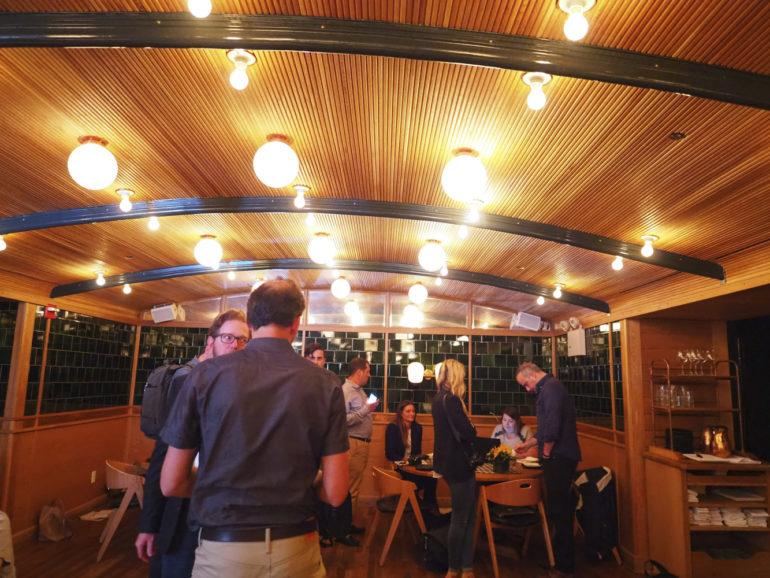
This time around, Olympus allowed us to take sample images home from the Olympus OMD E-M10 Mk III. We’re still working on our full review though.

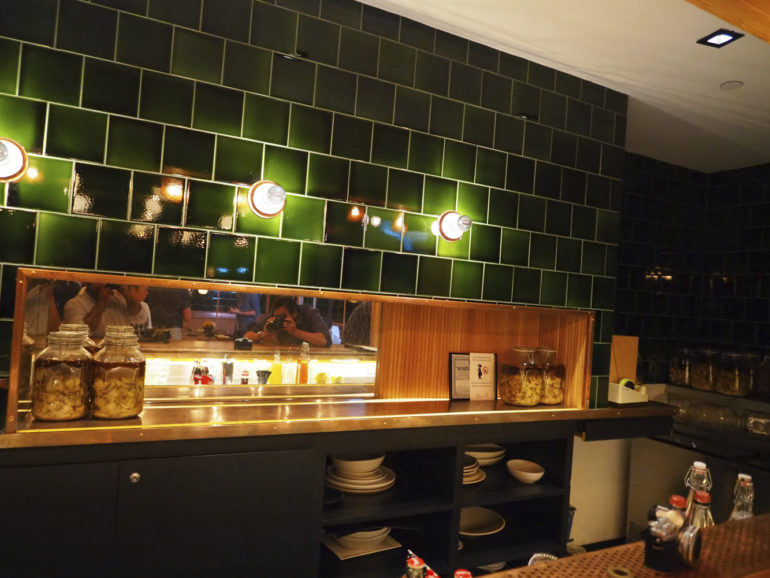
First Impressions
The Olympus OMD E-M10 Mk III seems like a good option for many people that really want to step up to an interchangeable lens camera. If you really want compactness and fast autofocus to capture your kids running around, this could be one of your best options. We’re still working on a full review though, so stay tuned.
Press Release
NO PHONING IT IN: OLYMPUS OM-D E-M10® MARK III HELPS TAKE YOUR PHOTOGRAPHY TO THE NEXT LEVEL
Compact Interchangeable Lens Camera with New Touch Screen Interface Effortlessly Captures and Shares Blur-Free, High-Quality Images in Any Scene
CENTER VALLEY, Pa., August 31, 2017 — Olympus’ new OM-D E-M10 Mark III is a compact, lightweight, easy-to-use interchangeable lens camera that offers the performance and image quality of the OM-D® lineup to the snapshooter looking to expand their photography. The OM-D E-M10 Mark III includes best-in-class image stabilization compensation performance and the same TruePic VIII Image Processor used in Olympus’ acclaimed flagship OM-D E-M1 Mark II camera. This combination delivers high-quality images even in situations when camera shake typically causes blur, such as night scenes or handheld telephoto shooting.
Consumers looking to step up from their smartphone camera to an interchangeable lens system will instantly benefit from the OM-D E-M10 Mark III’s 5-Axis Image Stabilization. With an image stabilization system built into the camera body, it can provide blur-free images no matter which lens is attached, and can also record crisp, shake-free handheld 4K videos in cinemalike quality.
The camera is compact and lightweight to easily be taken anywhere to capture and share standout, like-worthy images on social media. Designed for ease of use, both in form and functionality, the grip rests nicely in the hand, and buttons and dials are thoughtfully positioned for effortless operation. The body is equipped with a variety of features for different shooting styles and situations, including a high-resolution electronic viewfinder, a tilting rear LCD monitor with touch controls similar to a smartphone and a built-in flash.
First-time interchangeable lens camera users benefit from four shooting assist modes to capture brilliant images right out of the box. The intelligent AUTO Mode detects the shooting scene, subject, camera movement and light transmitted through the lens, then automatically chooses the optimal settings. The other assist modes include Scene Mode (SCN), Advanced Photo Mode (AP), and Art Filter Mode (ART), each of which appear on the mode dial alongside AUTO Mode for easy access.
The Touch AF shutter, which now takes advantage of 121 autofocus points, allows users to choose the precise area of focus and trip the shutter simply by touching the LCD screen. Continuous AF (C-AF) Mode maintains focus on moving subjects when the shutter is pressed halfway.
The OM-D E-M10 Mark III is equipped with built-in Wi-Fi®, which can be used in conjunction with the Olympus Image Share (OI.Share®) app to easily connect to a smart device and wirelessly transfer images for quick editing and uploading to social media.
Pricing and Availability
| The Olympus OM-D E-M10 Mark III will be available in a black and silver body or black body beginning in late September with an estimated street price of $649.99 USD/$799.99 CAD (body only) and $799.99 USD/$999.99 CAD (M.Zuiko 14–42mm EZ Lens kit). For a complete list of specifications, visit the Olympus website:https://getolympus.com/digitalcameras/omd/e-m10-mark-iii.html. |
Main Features
In-body 5-Axis Image Stabilization can deliver blur-free, high-quality images in any scene
The OM-D E-M10 Mark III is equipped with high-performance in-body 5-Axis Image Stabilization and the same TruePic VIII Image Processor used in the acclaimed flagship model OM-D E-M1 Mark II. These technologies combine to give users of all levels a camera that delivers improved performance in low-light shooting conditions and beautiful, blur-free images and movies in any shooting scene without using a tripod. Best-in-class, built-in compensation performance (four shutter-speed stops) provides pin-sharp photos with high image quality, even in situations where camera shake is prevalent, such as night scenes and dim indoor conditions, and when using a telephoto lens. This powerful image stabilization system also enhances video capability, providing beautiful, shake-free handheld 4K movies.
Compact premium OM-D design
The OM-D E-M10 Mark III has a sophisticated, compact and lightweight body that can easily be brought along on any adventure. The camera is optimized for ease of use, with an easy-to-hold grip, and buttons and dials designed for easy operation. The camera is equipped with a variety of features for different shooting styles and situations, including a high-resolution electronic viewfinder, a tilting LCD screen with touch operations similar to a smartphone, and a built-in flash.
Four shooting assist modes for entry-level users
The OM-D E-M10 Mark III is equipped with four shooting assist modes so that first-time interchangeable lens camera users can shoot with ease. AUTO, Scene (SCN), Advanced Photo (AP), and Art Filter (ART) Modes appear on the mode dial for easy access.
When in AUTO Mode, the camera detects the shooting scene, subject, lighting, and movement of the camera and subject to automatically select the optimal settings to allow anyone to capture blur-free, pin-sharp photos, even in dimly lit indoor situations. In Scene Mode, users can touch one of six shooting environments, each displayed on the LCD monitor, to activate the ideal settings. The Advanced Photo Mode opens up users of all levels to popular photography techniques, such as nighttime Live Composite and Multiple Exposure. Bleach Bypass is a new filter in Art Filter Mode that reproduces the silver retention method used when developing film. Type I produces a glossy look, like shining silver metal, and Type II produces a nostalgic look reminiscent of old film.
High-speed AF performance with touch operation to capture any subject
The OM-D E-M10 Mark III is equipped with high-speed AF to instantly focus on fast-moving subjects and capture beautiful, sharp images.
When using the Touch AF Shutter, users can simultaneously focus and release the shutter by simply touching on the tilting screen the area they want to focus on. The camera features 121 AF points that cover most of the image area, allowing you to easily focus on the subject. It is equipped with Face Priority AF and Eye Priority AF to ensure sharp focusing on the face or eyes of the person closest to the camera. Also available is C-AF for continuous focusing on moving subjects, and up to 8.6 frames per second high-speed sequential shooting for capturing split-second expressions.
Built-in Wi-Fi for easy smartphone connection and sharing
The OM-D E-M10 Mark III is equipped with built-in Wi-Fi that can be used in conjunction with
the Olympus Image Share (OI.Share) app to easily connect to a smart device and wirelessly transfer images and video for quick uploading to social media. Simply scan the QR code displayed on the camera’s screen with a smart device to pair the devices. A smart device can also be used as a remote trigger for shooting group photos and for adding GPS information to photos displayed on a map to indicate where they were captured.
Other Features
Shortcut Button for easy menu navigation
The new Shortcut Button on the left-hand side of the camera instantly displays the setting menu most relevant to the current shooting mode so that users can quickly change settings. For example, users can press the Shortcut Button while shooting in Scene Mode to quickly switch to another shooting environment.
Easily accessible settings and adjustments
Settings are assigned to the four arrow pad buttons on the back of the camera, including ISO, flash, drive and focus settings, which can be activated with the press of the corresponding icon. Two customizable function buttons can be programmed with one of 11 different functions, such as Digital Tele-Converter for instant activation with one button press. Two dials on the upper section of the body can be used to change settings and make adjustments on the fly.
Optional Accessories
Genuine Leather Body Jacket, CS-51B
This new genuine leather body jacket is customized for the OM-D E-M10 Mark III. It helps protect the camera body from scratches and enhances the look of the camera with its genuine leather texture. Color options include black and brown. The genuine leather shoulder strap CSS-S109LL II and genuine leather lens cover LC-60.5GL (both currently available) make it easy to create a coordinated look for the camera.
Sales Outline: Available Accessories
| Product Name | MSRP | Anticipated Availability Date |
| Genuine Leather Body Jacket, CS-51B (Black/Brown) | $49.99 USD
$54.99 CAD |
September 15, 2017 |
| Genuine Leather Lens Cover, LC-60.5G
(Light Brown/Brown/Black/White) |
$59.99 USD
$59.99 CAD |
Currently available |
| Soft Camera Case, CS-44SF
(Black) |
$53.99 USD
$53.99 CAD
|
Currently available |
| Multipurpose Case, CS-50SF
(Black/Beige) |
$29.99 USD
$38.99 CAD
|
Currently available |
| Genuine Leather Shoulder Strap,
CSS-S109LL II |
$49.99 USD
$49.99 CAD |
Currently available |
| Genuine Leather Strap, CSS-S119L
(Black/Brown) |
$79.99 USD
|
Currently available |
| Shoulder Strap, CSS-P118 | $49.99 USD
$49.99 CAD |
Currently available |
| Genuine Leather Hand Strap,
CSS-S110 LS (Brown/Black/White) |
$29.99 USD
$29.99 CAD |
Currently available |
| Large Eyecup, EP-16 | $22.99 USD
$22.99 CAD |
Currently available |
| Camera Bag, CBG-8 | $73.99 USD
$73.99 CAD |
Currently available |
| Quilted Case, CS-43 | $29.99 USD
$29.99 CAD
|
Currently available |
| Wrapping Cloth, CS-35 | $29.99 USD
$24.99 CAD
|
Currently available |
| Automatic Opening Lens Cap, LC-37C | $8.99 USD
$8.99 CAD
|
Currently available |
| Rechargeable Lithium Ion Battery, BLS-50 | $64.99 USD
$79.99 CAD |
Currently available |
| Rechargeable Lithium Ion Battery Charger BCS-5 | $69.99 USD
$69.99 CAD
|
Currently available |


